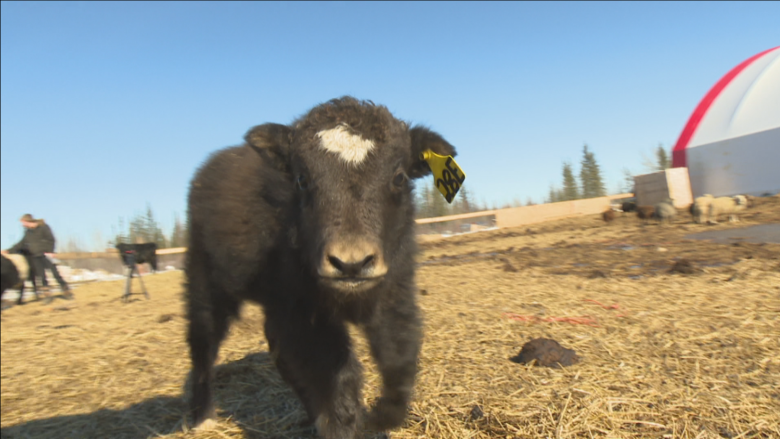Could yaks be the N.W.T.'s new cows?
The Northern Farm Training Institute has bought in a new animal more at home in the Himalayas than Hay River – but Zak the month-old yak has been settling in well at the farm.
He has even been adopted by the herd of cows.
"The cows like him. He's nursing off of some of the cows. So it's going well, I think," says NFTI's holistic management supervisor, Sheldon Nicholson.
"He's not sure if he's a cow, or a person, or a dog. He's really friendly. And he makes noises like a pig does."
As Nicholson speaks, Zak circles him like an eager dog, wagging his tail and head-butting his boots. Soon that head will sport horns up to a metre across, on a body that can reach over 1,200 pounds — dwarfing the cows that currently tower over him.
To add to Zak's identity crisis, Nicholson is hoping to someday breed the yak with cows to make hybrids. Those animals could produce milk that is not regulated like most dairy, meaning the small operation could test the market without having to jump in at the level of industrial dairy operations.
"The cross-breed will be even more well-adapted, will grow faster, and will produce more milk. So it will be the best of both worlds," Nicholson claims, though the test of that theory is still years away, with Zak still nursing.
Zak comes from Alberta. Yaks, however, are more often found in the Himalayas through to Mongolia and even Russia, and are closely related to bison. With that hardy pedigree, Nicholson says yaks are a perfect animal for the Northwest Territories.
"They do really well in really harsh winters. And they're amazing for food security because they produce meat, they produce some of the most nutritious milk on earth," he says.
"We think they're going to be a really important part of northern food security in the future… The kind of food security that will feed you when all the planes are stopped and the ice road's not running."



